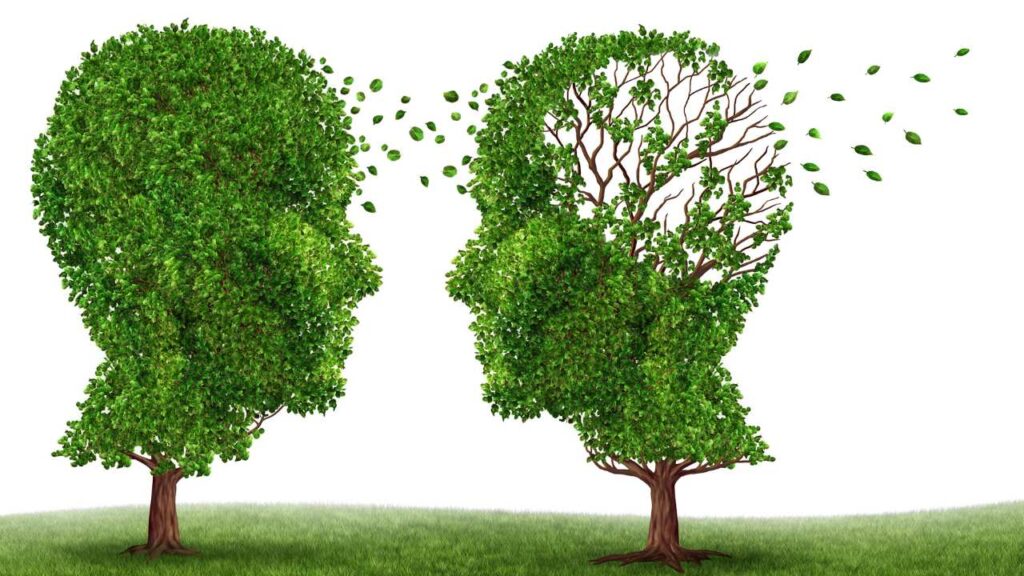Like Alzheimer’s and vascular dementia, Lewy Body Dementia (LBD) is dementia, a brain disease, which involves thinking and memory issues that affect daily life. Like the other kinds of dementia, there is no cure for it but some of its symptoms can be somewhat managed with medication.
It’s not a new disease but has been identified with greater specificity in the last century. Lewy Body Dementia is named after German Jewish Dr. Friedrich Heinrich Lewy who discovered the clumps two years after graduating medical school in 1912. He served his country during World War I and emigrated to the United States during the early years of Nazi dominance. He did further important neurological research here and served his new country during the Second World War.

There has been extensive research on these clumps since his discovery. We now know that there are two kinds of LBD: Dementia with Lewy Bodies and Parkinson’s Disease Dementia. In the first, memory and thinking problems present first. In the latter form for LBD Parkinson’s symptoms present first, usually in terms of mobility issues, and then memory and thinking problems develop.
The same thing causes both forms of LBD. A protein in the brain called alpha-synuclein clumps in irregular fashion. It’s a key protein and seems normal at first but it folds, becomes sticky, and forms a ball. We don’t know why. It may be affected/triggered by genetics, age, gender, toxins and pesticides, and brain injury.
Lewy Body Dementia is a systemic illness that affects the brain, the spinal cord, and the nerves that go to specific body parts (eyes, heart, bladder, intestines, and sex organs). Therefore, there are many aspects to the disease and the symptoms vary from constipation, blood pressure, impotence, motor skills, and neuropsychiatric issues to sleep disorders.

Treating sleep disorders will go a long way to help with daily life. People who have LBD are very sleepy and may vocalize, punch, and act out dreams during REM sleep.
To manage the Lewy Body Dementia, a comprehensive approach is generally taken. Patients and family members are asked what the key priorities for the particular patient are. Then efforts are made to manage those symptoms by choosing medication that affects the respective neurotransmitter. Some of the popular medications cause problems in other areas and therefore a trial-and-error approach is taken, based on preferred priorities. Lewy Body Dementia of both types is progressive. There is also a lot of overlap between Dementia with Lewy Bodies and Parkinson’s Dementia Disease. There are differences in the brain cells that can be seen with scans and history of presentation of symptoms is different. But they seem to be two forms of one disease.
Undeniably, Lewy Body Dementia poses a complex and formidable challenge to patients, families, and healthcare providers alike. It is a progressive condition, one that requires a comprehensive and individualized approach to management, often involving a careful balancing act of medications to mitigate the diverse array of symptoms. While there are distinguishing characteristics between Dementia with Lewy Bodies and Parkinson’s Disease Dementia, the significant overlap between the two underscores the fact that they are, in essence, two manifestations of the same disease. As our understanding of LBD continues to grow, it is crucial to remember the human element behind the disease – the individuals battling with its symptoms daily and the loved ones supporting them. Our collective commitment to research, patient care, and societal awareness is essential in navigating the challenges presented by LBD, striving towards improved symptom management and, ultimately, a potential cure.

Other articles on home care, and caregiving:
- Is Bereavement Visible on the Horizon?
- How CDPAP can Change your Life
- When things are getting worse for both your Mother & You
- CDPAP, Insourcing Your Parent’s Home Care in New York
- How to put together a caregiving calendar. And why you should
- The Good News about Midlife Resilience
Lewy Body Dementia (LBD) FAQ
What is Lewy Body Dementia (LBD)?
Who is Dr. Friedrich Heinrich Lewy and what is his connection to Lewy Body Dementia?
What are the two kinds of Lewy Body Dementia and how do they differ?
What causes Lewy Body Dementia?
What symptoms can Lewy Body Dementia cause?
How is sleep affected in Lewy Body Dementia?
How is Lewy Body Dementia managed?
How does Lewy Body Dementia progress over time?
What challenges does Lewy Body Dementia pose?
disease – the individuals battling with its symptoms daily and the loved ones supporting them. Our collective commitment to research, patient care, and societal awareness is essential in navigating the challenges presented by LBD, striving towards improved symptom management and, ultimately, a potential cure.
What is the future outlook for patients with Lewy Body Dementia?
Please note, it seems there was a minor error in retrieving the exact quote for the completion of the answer to Question 9, but the general idea is captured in the provided response.






